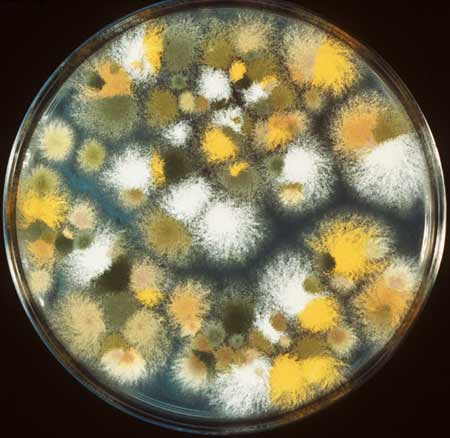In the Fungi family, there is a notable scholar: Aspergillus.
 |
|
(Image: rhodes.edu) |
In many dishes, tofu is a favorite among many people. Tofu contains a high level of protein that is difficult to hydrolyze, which can make it taste bland. Aspergillus has a special ability to secrete protein-hydrolyzing enzymes, breaking down tofu into various amino acids that stimulate the taste buds, making it taste delicious. The delightful flavor of tofu is thanks to the effects of Aspergillus.
The fungal filaments of Aspergillus have a partition and belong to the multicellular mold category. Its colonies exhibit various colors, giving rise to different types of molds named after their colony colors: yellow mold, red mold, betel nut mold, and so on. During the Zhou Dynasty in China, black mold was used to dye garments for the Empress. However, back then, people were not familiar with the medicinal properties of this fungus and had little understanding of its colonies.
Because molds have the ability to hydrolyze proteins, they have long been utilized in food processing. They are essential in brewing alcohol, making vinegar, and preparing various types of sauces. Today, the industrial production of organic acids and sugars used in animal feed also relies heavily on molds.
However, there are also harmful variants within the mold family, such as the yellow mold found in soybeans and peanuts, which contains toxins that can cause cancer and lead to poisoning in livestock.

(Image: broad.mit)


















































